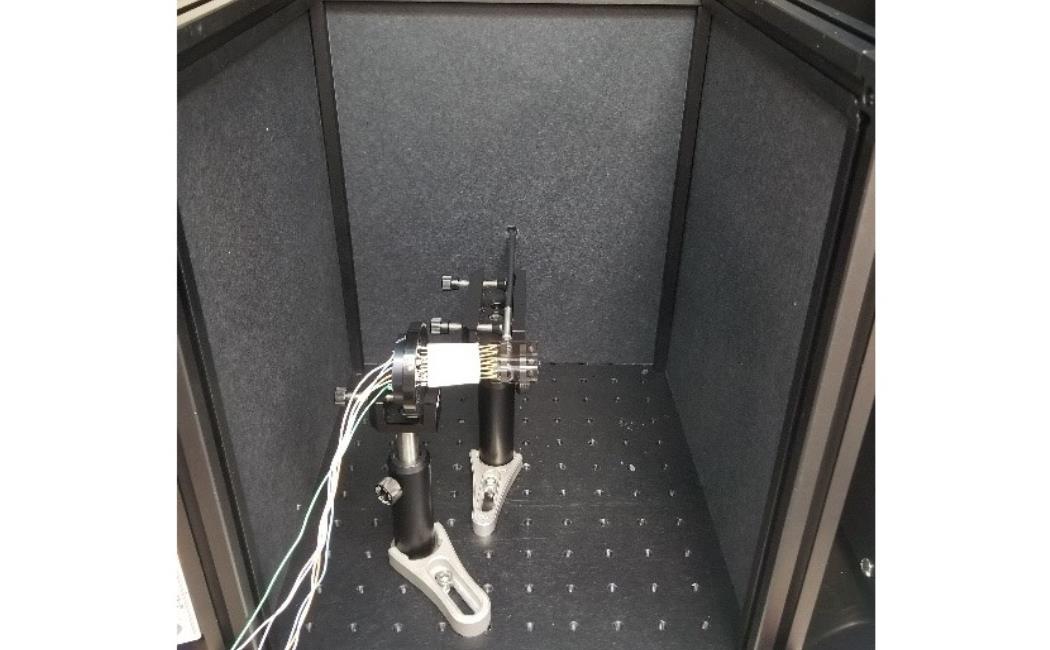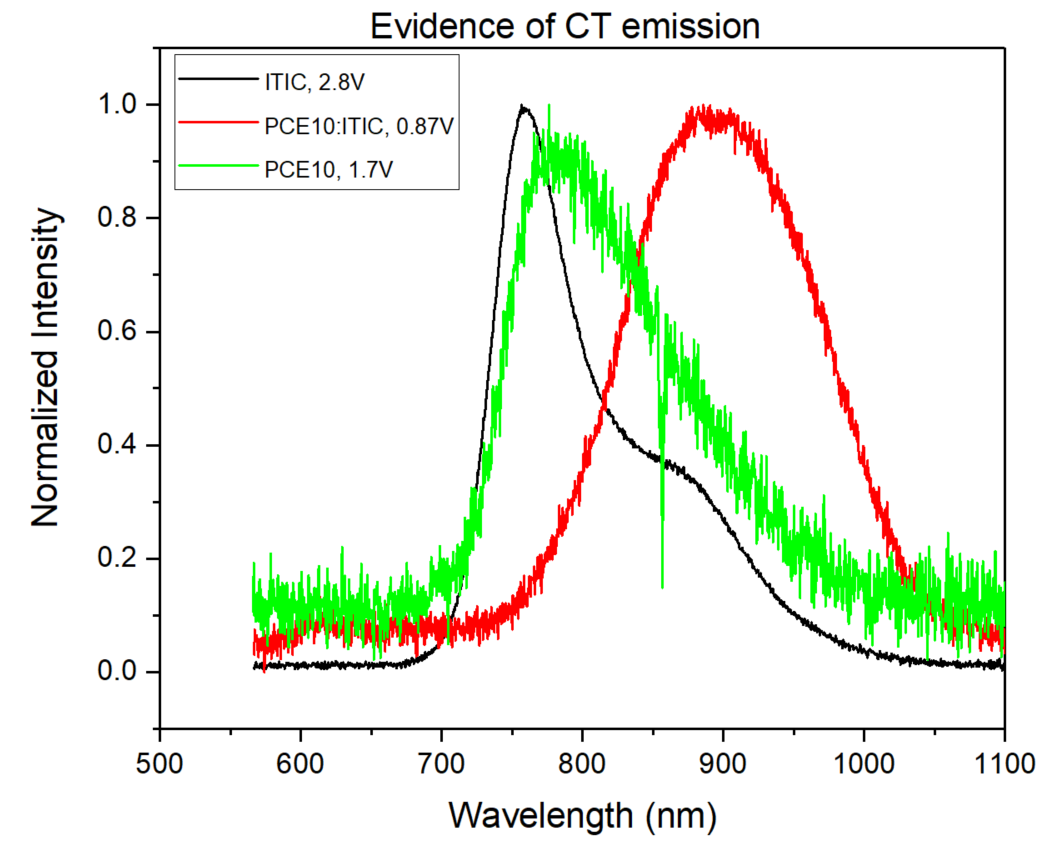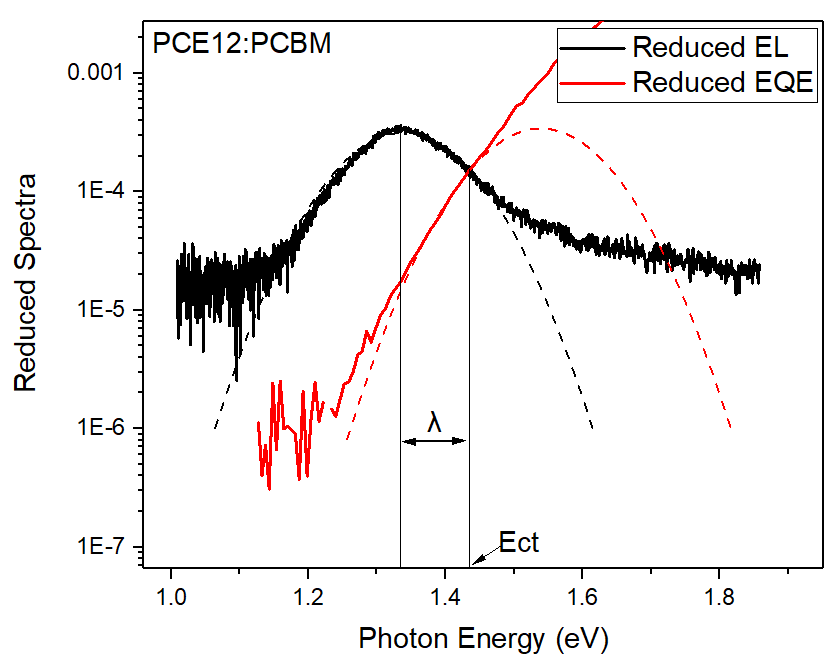
Electroluminescence spectroscopy (ELS) measures the luminescence emission from a device following charge injection and recombination, for instance, the emission caused by bimolecular recombination of charges in organic solar cells. This emission spectrum can be used to determine the energy of interfacial charge-transfer (CT) states. CT states are coulombically bound electron-hole pairs at the interface between the electron donor and acceptor materials. ELS works by applying a negative bias to the solar cell, close to the open-circuit voltage of the device, causing carrier injection. The injected carriers create CT states at the interface, which successively recombine. The CT state recombination is partially radiative (emission of photons). In organic solar cells, the CT state energy is determined by the difference in energy between the lowest unoccupied molecular orbital (LUMO) of the acceptor and highest occupied molecular orbital (HOMO) of the donor. The emergence of a new emission band different from that of either material (pristine donor or acceptor) is a clear indication of CT state formation and recombination in a donor-acceptor blend system. An example is shown in Figure 1.

Figure 1: Electroluminescence spectra of pristine PCE10 (donor polymer), ITIC (non-fullerence acceptor), and a PCE10:ITIC bulk heterojunction system. Note that the EL emission of the donor-acceptor blend shows a new emission band different from either of the pure materials, characteristic of interfacial CT state emission.
Compared to other spectroscopic techniques, which can also be used to probe the presence of CT states, ELS offers much clearer results, which are easier to analyze. With a low backward bias on the device, all recombination must occur through the CT state, and no emission by the pure materials is detected. This is in contrast with other techniques such as photoluminescence (PL) spectroscopy, which often shows the emission of the pure materials, masking the CT state emission. In combination with results from our home-built sensitive external quantum efficiency (EQE) setup, the ELS technique is a powerful tool to probe the intrinsic photovoltaic properties of different material systems, as exemplified for a prototypic PCE12:PCBM blend shown in Figure 2 [1].

Figure 2: By combining and fitting the data of ELS and EQE measurements, the CT state energy ECT can be determined at the intersection of the two Gaussian fits.
[1] K. Vandewal, K. Tvingstedt, A. Gadisa, and J. V Manca, “Relating the open-circuit voltage to interface molecular properties of donor:acceptor bulk heterojunction solar cells,” pp. 1–8, 2010.